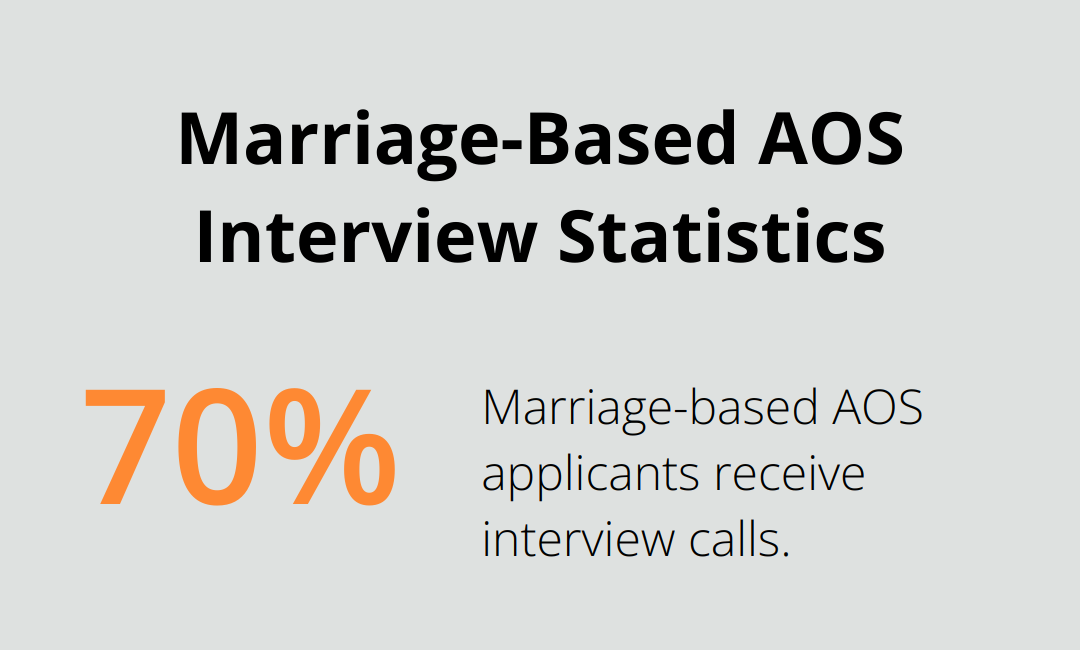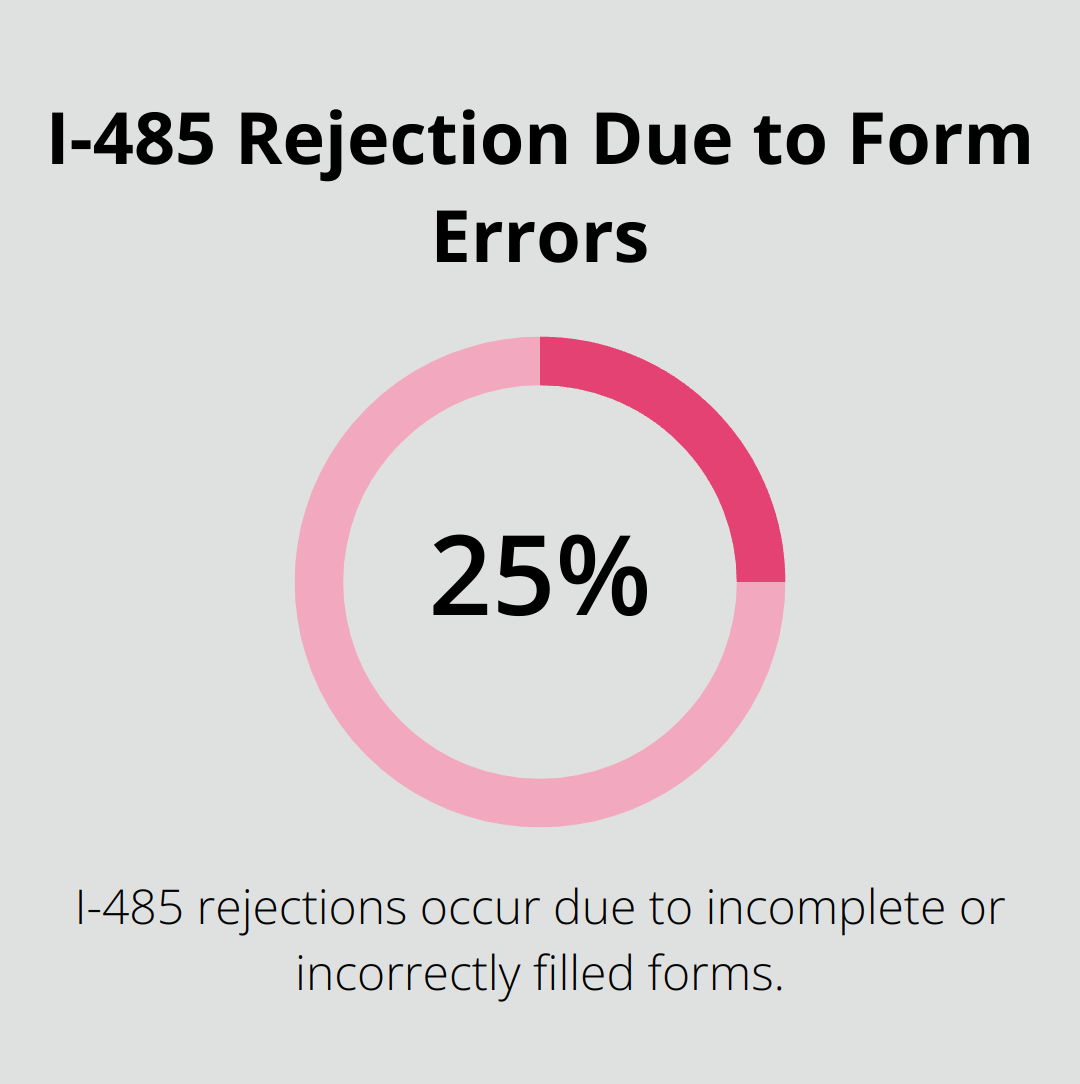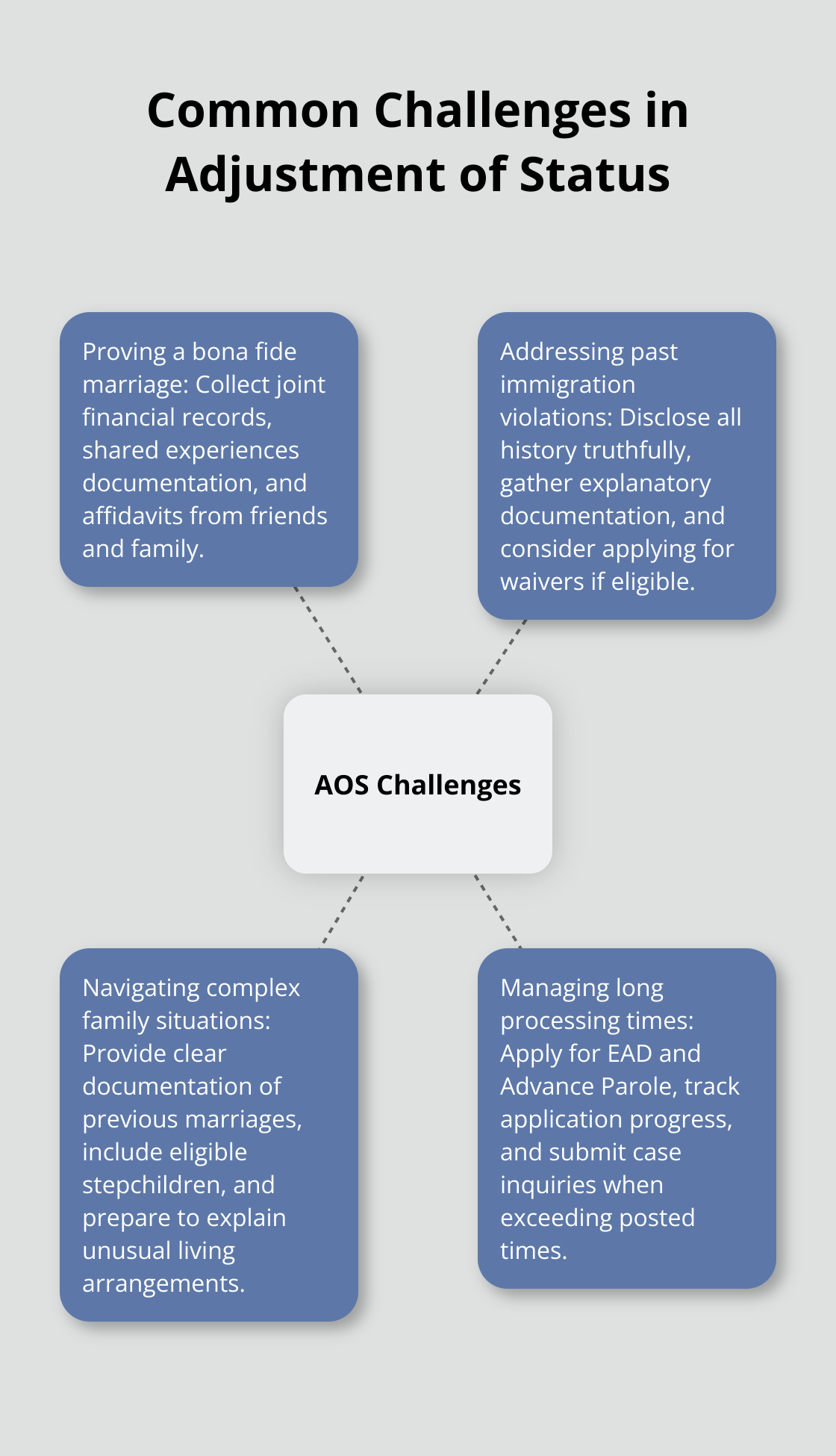
How to File for Adjustment of Status After Marriage
Filing for Adjustment of Status after marriage can be a complex process for many couples. At Law Offices of Jeffrey A. Thompson, we understand the challenges and uncertainties you may face during this important step in your immigration journey.
Our comprehensive guide will walk you through the essential steps, requirements, and potential hurdles you might encounter. We’ll provide practical advice to help you navigate the process with confidence and increase your chances of a successful outcome.
What Is Adjustment of Status After Marriage?
Definition and Process
Adjustment of Status (AOS) after marriage allows eligible foreign nationals in the United States to apply for lawful permanent resident status without leaving the country. This process benefits individuals who have married U.S. citizens or lawful permanent residents.
Eligibility Requirements
To qualify for AOS after marriage, applicants must meet specific criteria:
- The marriage must be legally valid and entered into in good faith.
- The U.S. citizen or lawful permanent resident spouse must file Form I-130 (Petition for Alien Relative).
- The foreign national must have entered the U.S. lawfully and maintained lawful status (with some exceptions for immediate relatives of U.S. citizens).
Previous immigration violations or criminal history can affect eligibility. Certain conditions may make an alien ineligible to adjust status on a new basis under the provisions of INA.
AOS vs. Consular Processing
Choosing between AOS and consular processing is an important decision:
- AOS advantages:
- Applicants remain in the U.S. during the process (9-12 months on average).
- Allows application for work authorization and travel documents while pending.
- Consular processing:
- Requires return to home country for visa processing.
- Can be faster (6-8 months on average).
- Risks prolonged family separation and potential travel complications.
Key Considerations for Applicants
Documentation
Thorough documentation proves the bona fide nature of the marriage. This includes:
- Joint financial accounts
- Shared lease agreements
- Photographs together
USCIS reports that insufficient evidence of a genuine marriage tops the list of reasons for Requests for Evidence (RFEs) in marriage-based AOS cases.
Interview Preparation
The interview is a critical component of the AOS procedure. Recent USCIS statistics indicate that about 70% of marriage-based AOS applicants receive interview calls. This highlights the need for comprehensive preparation and readily available documentation.

As we move forward to discuss the steps involved in filing for Adjustment of Status, it’s important to understand that each case is unique. The Law Offices of Jeffrey A. Thompson can provide personalized guidance tailored to your specific situation, ensuring you navigate this complex process with confidence.
How to File for Adjustment of Status After Marriage
Filing for Adjustment of Status (AOS) after marriage involves several critical steps. This process allows eligible foreign nationals in the United States to apply for lawful permanent resident status without leaving the country. Let’s break down the essential components of this complex procedure.
Gather Essential Documents
Start by collecting all necessary documents. These typically include:
- Birth certificates for both spouses
- Marriage certificate
- Passport and I-94 record of the foreign spouse
- Financial records (tax returns, pay stubs, bank statements)
- Evidence of shared life (joint lease, utility bills, photos)
A USCIS study found that applications with comprehensive documentation are 30% less likely to receive Requests for Evidence (RFEs), which can significantly speed up the process.
Complete Form I-485
Form I-485 serves as the core application for AOS. When filling it out:
- Answer all questions truthfully and completely
- Use black ink or type your responses
- Include your A-number on every page
- Sign and date the form
According to USCIS, over 25% of I-485 rejections occur due to incomplete or incorrectly filled forms. Take your time and double-check everything to avoid this common pitfall.

Submit Supporting Forms
Along with Form I-485, you’ll need to submit several supporting forms:
- Form I-130 (Petition for Alien Relative)
- Form I-864 (Affidavit of Support)
- Form I-693 (Report of Medical Examination and Vaccination Record)
- Form I-765 (Application for Employment Authorization), if desired
Each form serves a specific purpose in proving your eligibility and relationship validity. For instance, the I-864 demonstrates that the U.S. citizen spouse can financially support the immigrant spouse (a key factor in AOS approval).
Pay Fees and Attend Biometrics Appointment
As of 2025, the filing fee for Form I-485 is $1,140, plus an $85 biometrics fee. Some applicants may qualify for fee waivers based on financial hardship.
After submitting your application, you’ll receive a notice for a biometrics appointment. This involves fingerprinting and photographs for background checks.
The AOS process can be intricate, and mistakes can lead to delays or denials. Many couples find that working with experienced immigration attorneys (such as those at the Law Offices of Jeffrey A. Thompson) can significantly increase their chances of a smooth and successful adjustment of status application. As we move forward, let’s explore some common challenges that applicants face during this process and how to overcome them.
Overcoming Common Challenges in Adjustment of Status

Proving a Bona Fide Marriage
USCIS closely examines applications to prevent marriage fraud. To strengthen your case:
- Maintain joint financial accounts and credit cards
- Keep detailed records of shared experiences (photos, travel itineraries, holiday celebrations)
- Collect affidavits from friends and family
- Preserve communication records (text messages, emails, social media interactions)
Requests for Evidence (RFEs) provide data on various aspects of USCIS operations, including the office responsible for adjudication.
Addressing Past Immigration Violations
Previous infractions can complicate your AOS application. Common issues include visa overstays, unauthorized employment, or entering the U.S. without inspection. If you have such violations:
- Disclose all past immigration history truthfully
- Gather documentation explaining violation circumstances
- Consider applying for waivers if eligible (e.g., I-601A provisional waiver for unlawful presence)
Legal counsel is essential in these situations to navigate the complex waiver process effectively.
Navigating Complex Family Situations
Blended families, previous marriages, or children from prior relationships add complexity to your AOS application. To address these challenges:
- Provide clear documentation of all previous marriages and divorces
- Include stepchildren in your application if eligible for derivative status
- Prepare to explain any unusual living arrangements or family dynamics during your interview
Thorough documentation and clear explanations can help reduce processing delays.
Managing Long Processing Times
AOS applications can take several months to over a year to process. This waiting period can impact your ability to work or travel. To manage this challenge:
- Apply for Employment Authorization Document (EAD) and Advance Parole with your AOS application
- Use the USCIS case status online tool to track application progress
- Submit a case inquiry if your application exceeds posted processing times
To help strengthen your case, consider writing a support letter for your family member’s immigration application. This can provide additional evidence of your relationship and commitment.
Final Thoughts
Filing for Adjustment of Status after marriage requires meticulous attention to detail and a thorough understanding of immigration laws. Couples must gather essential documents, complete necessary forms, and navigate potential challenges throughout the process. The journey to secure permanent residency in the United States demands careful preparation and accurate filing to improve the chances of a successful application.
Many couples find value in professional legal assistance when tackling this complex process. Experienced immigration attorneys can provide guidance, help address past immigration issues, and ensure applications present the strongest possible case for approval. Their expertise often proves invaluable in navigating the intricacies of immigration law and handling high-stakes situations.
We at the Law Offices of Jeffrey A. Thompson offer expert guidance for couples filing for Adjustment of Status after marriage. Our team can help you build a compelling narrative of your relationship and commitment to your new life in the United States. With proper support, you can approach this process confidently, knowing you’re taking all necessary steps to secure your future together in America.


